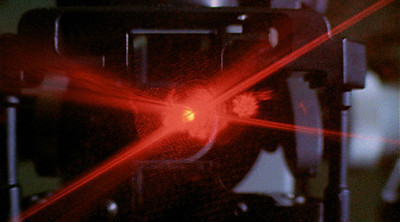CARE
OFFERED
Clinical Procedures
Laser Treatment
Laser is a highly concentrated beam of purified light that carry a large amount of energy. It can be used to treat tissues inside your eye without having to make a wound. Yellow-green lasers are used to burn sick retinal tissue in e.g., diabetic retinopathy, or to seal tears in the retina. It can also be used to destroy abnormal blood vessels and to reduce retinal swelling. Very powerful lasers can be used to create a new conduit in the retinal blood vessels to divert the blood flow around an obstruction in patients with retinal vein occlusion. Another laser, called YAG laser, is used to precisely cut tissues inside the eye.
Find out more about:


Eye Injections
Many patients with wet macular degeneration, diabetic retinopathy and retinal vein occlusion require regular injections into the eye to control the disease. The injections need to be repeated every 4 weeks initially, but most patients can be treated less frequently once the disease stabilises. Injection into or around the eye may also be needed for inflammation of the eye or swelling of the retina. Less commonly, intraocular injection is used to slow down the over-growth of abnormal blood vessels, which may cause internal bleeding or painful glaucoma.
Eye injections are performed under local anaesthesia and are well tolerated. The surface of the eye needs to be sterilised with antiseptics to minimise the risk of infection. The injection itself is usually not painful, but the antiseptic fluid used to clean the eye can sometimes cause burning and stinging discomfort.

Care After Eye Injections
-
Eye injections are safe and well-tolerated but it is an invasive procedure that can rarely lead to complications. Emergency contact number will be provided in case help is needed.
-
Your eye can feel gritty or irritated after eye injections. Frequent lubrication with artificial tears and keeping the eye closed will help. The eye usually becomes more comfortable within 24 hours.
-
The vision will usually be mildly blurred. Severe deterioration of vision is unusual and should be reported immediately.
-
A bright red spot at the injection site is due to conjunctival bleeding on the surface of the eye. If you take blood thinners, the bleeding can sometimes be more severe. Bleeding outside the eye does not affect the vision.
-
Small dark blobs or dots at the bottom of the vision are due to air bubbles introduced by the injection. They will disappear within 24 hours. Persistent haze or cobwebs, or numerous black dots all over the field of vision are abnormal and should be reported immediately.
-
Rarely, you may experience severe pain some hours after the injection. This indicates that the surface of the cornea has been damaged by the antiseptic solution or anaesthetics. This should be reported immediately.
-
If the eye becomes increasingly red, painful and blurry, please report immediately to ensure that the eye is not developing an infection. Infection from an eye injection is rare but can be devastating. It usually becomes evident 1 to 3 days after the injection was performed.
-
If the emergency number is not answered for any reason, please go to the nearest hospital eye department.
Sydney Eye Hospital:
Westmead Hospital:
Concord Hospital:
Liverpool Hospital:
Royal Prince Alfred Hospital:
Royal North Shore Hospital:
Prince of Wales Hospital:
9382 7111
9845 5555
9767 5000
9828 3000
9515 6111
9926 7111
9382 2222